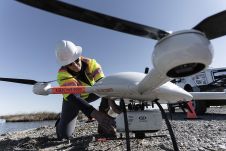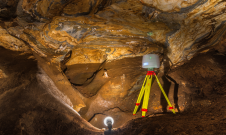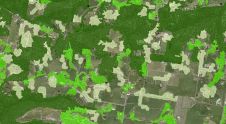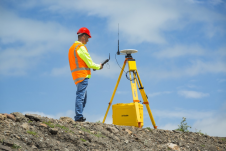在北极圈的北部使用激光雷达
Challenging Aerial Acquisition Mission in Greenland
This aerial acquisition mission in Greenland was made all the more challenging by the unique Arctic location. Precise geodata is considered vital to support almost all aspects of community activities and future development on the world's biggest island.
The acquisition of precise geodata is a high priority in Greenland, the world’s biggest island and a place of great diversity. There, geodata is considered vital to support almost all aspects of community activities and also for the future development of the autonomous territory within the kingdom of Denmark. This article provides insight into an aerial acquisition mission made all the more challenging by Greenland’s unique Arctic location.
In the summer of 2019, ASIAQ Greenland Survey commissioned the engineering company Niras to acquire Lidar data and photographic imagery of the five largest cities in Greenland: Nuuk, Sisimiut, Ilulissat, Qaqortoq and Aasiaat. The northernmost of the five – the city of Ilulissat – is situated 350km north of the Arctic Circle. The Danish company called机载LIDAR映射A / s分配了数据采集的任务。
Mission Requirements
For the mission to be a success, certain requirements needed to be meet. These included completing data acquisition over a city in a single day with a maximum allowable snow cover of 20%. Additionally, the angle of the sun had to be at least 30 degrees to the horizon during all collection operations, atmospheric and meteorological conditions between the aircraft and ground had to be free of cloud, fog and precipitation, the point density had to be at least six points per square metre in order to produce high-density point clouds, the vertical accuracy had to be better than 3cm and the ground sample distance (GSD) had to be 5cm.
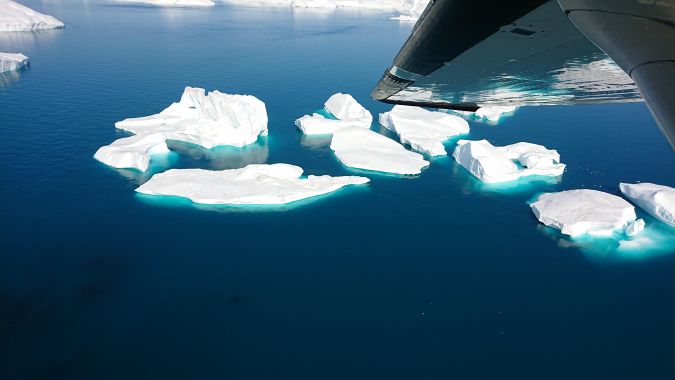
准备
要扫描的实际区域相对较小:80km2at Nuuk, 21km2在Sisimiut,10公里2在Aasiaat,24km2at Ilulissat and 11km2在Qaqortoq,总计146公里2in total. Nevertheless, the mission requirements combined with the Arctic climate, the remote location and the sheer size of Greenland necessitated careful planning – in terms of both the data acquisition method and the logistics of transporting the aircraft used. For the acquisition of data, the equipment chosen was theRIEGL 480iairborne scanner, an Applanix 510 IMU and twoHasselblad A6 100C.cameras.
空中平台的稳定性也很重要,这最终导致了Cessna C337 Skymasterbeing chosen. The Cessna 337 is a multi-engine aircraft built in a push-pull configuration, which offers different handling from conventional multi-engine aircraft. The aircraft is inherently stable and the centreline thrust configuration means it does not experience yaw if an engine should fail. In line with the current regulations for operating an aircraft in Greenland, it was necessary to obtain and carry a large amount of safety-related items, including flares, red signal cartridges, a flag/sheet, mirror, emergency locator transmitter, compass, knife, matches, string and cooking stove, and waterproof sleeping bags and a roofed dinghy for every person on board. The C337 chosen for the mission also featured de-icing/anti-icing equipment and long-range fuel tanks, which further increased safety.
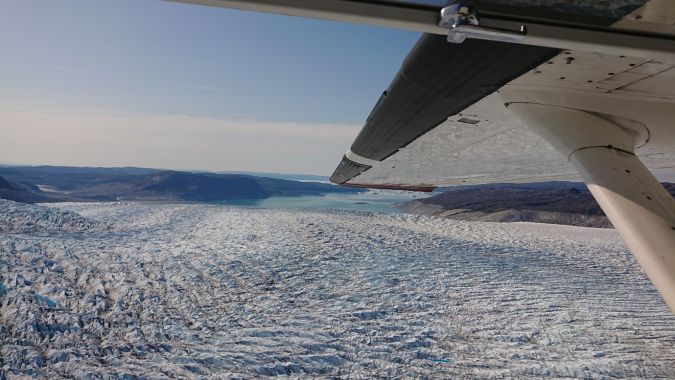
Mobilization and Start of the Mission
于2019年7月23日,塞斯纳337从瑞典机场的斯特鲁什机场离开格陵兰,在冰岛的驻地群岛和雷克雅未克的Sumburgh制作休息和燃料停止。该团队于7月24日抵达格陵兰岛,登陆东海岸的Kulesuk国际机场。Kulesuk机场与附近的Kulesuk的哈姆斯库特名称分享了大约300个居民,由美国于1956年由美国建造,作为遥远的早期警告线的一部分。
从北极圈,团队开始的第一个城市to be scanned: Qaqortoq. However, because Qaqortoq (like many cities in Greenland) only has a helipad rather than a runway, the airport of Narsarsuaq – approximately 30 nautical miles away – was a suitable base for the first phase of the mission. After performing the scan with no complications, the team proceeded north to Nuuk on 25 July. Unfortunately, the weather had changed by then, with low cloud, scattered rain showers and isolated fog making airborne Lidar data acquisition impossible. The mission was therefore put on hold and the team forced to wait until conditions became more favourable again a week later. The mission could finally be resumed on 2 August, and data was acquired of the city of Nuuk – one of the largest areas of the mission – in a scan which took approximately three hours to finish. After Nuuk, the next scan was performed in Sisimiut and the team then flew on to Ilulissat – home to theIlulissat Icefjord, which was added to the Unesco World Heritage List in 2004.
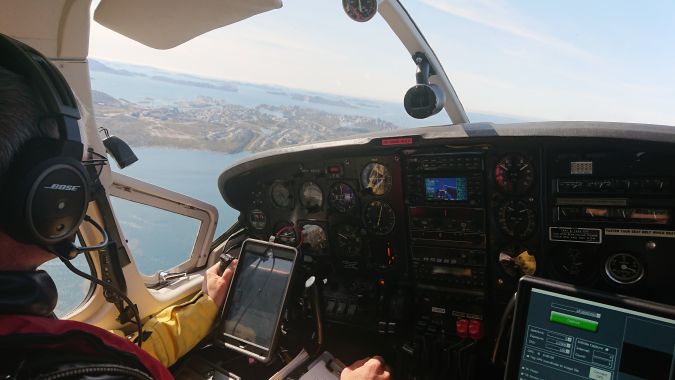
更多延误
抵达Ilulissat后,通过多云,潮湿和有雾的天气条件延迟进展,并且该市的调查不能直到8月5日。然后,进入任务的最后阶段,团队从Ilulissat重新安置到了调查的最终城市:Aasiaat。尽管最初不利的预测,但天气突然在8月9日下午清理了。该团队迅速调动,C337成功地与每个人和船上的一切都成功地驾驶,在当地机场15:00关闭之前。在没有任何进一步的并发症的情况下进行调查AASIAAT,该团队已完成该特派团的数据采集部分,总计3TB的原始数据。
Since the airport at Aasiaat was closed, the team flew south to Kangerlussuaq Airport for an overnight stay before heading back to Denmark. On 10 August, having spent the better part of three weeks in Greenland, it was time to depart from Kangerlussuaq and make the approximately 1,400km trip to Reykjavik in Iceland.
Data Processing
The global navigation satellite system (GNSS) and inertial measurement unit (IMU) data was processed using theApplanix MMS软件。为此,基本数据通过本地和现有基站派生。LIDAR数据的轨迹已合并RiProcess和RiPrecision, which was used to calibrate the data. The captured raw images were first processed in Photoshop to ensure uniform intensity, lighting and colour. The picture triangulation was subsequently done inAgisoft Metashape和Trimble Match AT, whereas the further processing continued in the uSmart suite. The photographic data was used for orthophoto production and photogrammetric updating of ASIAQ’s base map, and the Lidar data was used for creating new digital surface models (DSMs) and updating existing ones.

结论
Information is quickly becoming one of the most important commodities in the 21stCentury,持续的技术进步是带来新的处理和分享地理信息的新方法。收集格陵兰的激光雷达数据和摄影图像是一个具有挑战性,令人兴奋和重要的使命。对于格陵兰岛继续以与日益数字化的现代世界相同的速度发展,定义和准确的地理数据至关重要。在这个精心规划的项目中,合适的设备和专家在制定有助于支持有效决策的数据方面有助于支持格陵兰的未来发展。
让你的收件箱更有趣。Add some geo.
Keep abreast of news, developments and technological advancement in the geomatics industry.
Sign up for free














